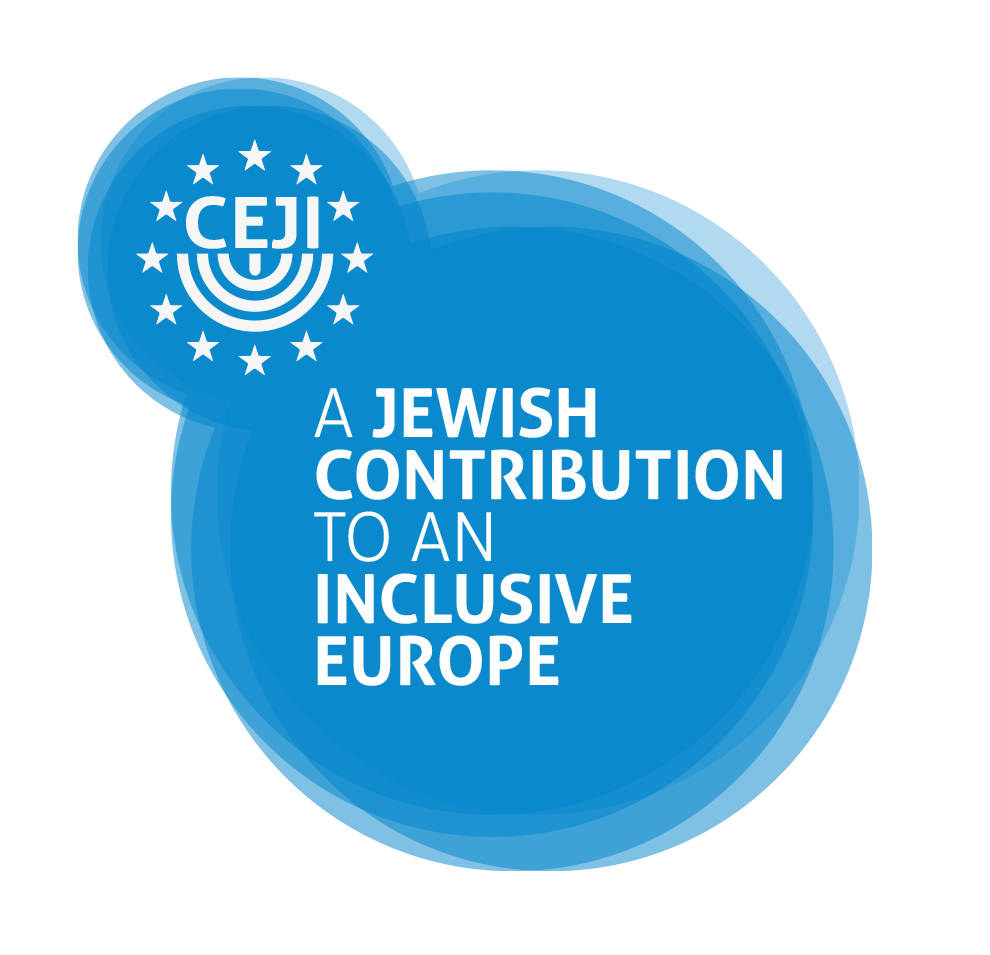Interconvictional dialogue as a way to combat extremism
06/01/2020
This article, written by CEJI Director Robin Sclafani, first appeared in the Our World Magazine on 18th December 2019. Browse the magazine here.
We often forget that Western Civilization began as religion! Western Civilization was the Western Church of one of Constantine’s sons: the Catholic or “universal” Church.
Extremisms seem to be spreading like wildfire, with anger flaring from real or perceived injustice and fear spreading in the face of a real or perceived threatening “other”. In a continuum of extremism in which violence is at the far-end (ie: terrorism), we can recognize the stages of escalation within much of the political and public discourse today. Increasingly polarized environments provide fertile ground as extremists spread propaganda to stir up fear and anger and drive groups apart. Terrorist attacks feed narratives of hate, purposely provoking further polarization in our political and social reality, where tribal-thinking can blind people to the common humanity of the “other.”
Extremisms are increasingly present within the fabric of nations, and these extremisms are often defined along religious or racial lines, with strong nationalist overtones, and sometimes leading to violence. They emerge in the mists of fear, othering, retreat into smaller comfort zones, narrowing points of view, marked somehow by identity boundaries.
We must find ways to reverse the course of this vicious circle of polarization so that it becomes a virtuous one, strengthening the fabric of social cohesion.
While it is evident that a multi-dimensional approach is needed, there tends to be an under-valuing of the importance of interconvictional and intercultural approaches to the process of building resilience in order to prevent violent extremism. The term interconvictional is used here to encompass what most understand as interfaith, but it includes those who are non-religious, non-believers, atheists, humanists and secularists, all who are also crucial parts of the religion and belief diversity of our societies.
Interconvictional and intercultural engagement, if done well, is a viable and productive area of action that can effectively address several different factors that have been shown to contribute to one’s vulnerability or resilience to extremist forces. Religion, like any other belief system or ideology, can be used to foment us vs. them paradigms and drive wedges of division in society. Interfaith or interconvictional perspectives, however, counteract this negative potential and support the positive force which religion and belief can play in fostering mutual understanding, respect and social cohesion.
Interconvictional and intercultural approaches refer to processes of drawing upon, facilitating amongst, learning about or otherwise somehow engaging different communities which may be identified due to their religious, ethnic, cultural or other socially-defined commonality. Until more recently, such approaches received little attention by policy-makers, funders, or the media.
International organizations have recognized the need to promote interconvictional and intercultural programmes, repeatedly reaffirmed through the Istanbul Process – the United Nations international framework for combatting discrimination and intolerance based on religion or belief.
Despite international agreements, political proclamations, and an increase in the number of local interconvictional initiatives thanks to small pockets of funding, there are still too many policy makers who are not enough convinced about the added value of integrating interconvictional and intercultural processes transversally across policy areas.
The most recent research into polarization, such as that being done by the Building Resilience against Violent Extremism (BRaVE) project coordinated by the European University Institute, highlights socio-economic, historical, cultural, and communication-based factors contributing to one’s vulnerability or resilience to extremism. To different extents, each of these four polarization factors can be directly or indirectly addressed by interconvictional and intercultural approaches, meaning that investment to expand this area would be worthwhile in terms of potentially meeting multiple needs simultaneously.
The biggest role for the interconvictional lies in the category of Cultural factors, which responds to the following resilience indicators :
Bonding Capital, also called Cultural Identity and Connectedness, refers to the importance for people to be familiar with and feel anchored to one’s own cultural heritage(s) and in the “mainstream” culture, feeling free and safe to share oneself with others. The surprising side effect of interconvictional programmes, such as the twice award-winning Belieforama training programme coordinated by CEJI-A Jewish Contribution to an Inclusive Europe, is that participants report they learned as much about themselves as they did about others. Engaging with difference helped them to see themselves in new light, to bringing to consciousness elements of culture and identity that were always implicit, and to want to learn more in order to be better able to explain one’s own origins, inherited beliefs and traditions. Interconvictional and intercultural engagement fosters greater connectedness to one’s own cultural identity and in relation to others. This type of activity is most often found in the fields of youth work, non-formal learning, and community dialogues. It can also be found in educational contexts where religious literacy objectives have been introduced into the formal curricula or school development projects.
Bridging Capital refers to trust and confidence in people from other groups; support for and from people from other groups; having the skills, knowledge and confidence to connect with other groups; valuing inter-group harmony; and active engagement with people from other groups. Interconvictional and intercultural approaches are first and foremost building bridges between people and communities. Relationships are built that can persevere in the face of difficulties, generating solidarity and collaboration towards joint objectives. Such joint objectives can include action on many of the other polarization factors identified by the BRaVE project, for example:
· Socio-economic: interconvictional efforts to address income inequality and segregation issues
· Historical: interconvictional alliances to address historical injustices, intergroup conflict or institutionalized discrimination
· Communication-based: interconvictional cooperation to report hate speech and promote positive counter-stereotypical narratives
Linking Capital refers to trust and confidence in government and authority figures; trust in community organisations; having the skills, knowledge and resources to make use of institutions and organisations outside one’s local community; ability to contribute to or influence policy and decision making relating to one’s own community. Interconvictional alliances towards relations with government provides opportunities for minority groups to have their needs heard and to feel included in civic dialogue.
In practice, interconvictional and intercultural approaches still tend to be taken up by public authorities ad hoc, through grassroots initiatives, special calls for funding, or advisory committees. As stakeholder consultations become an increasingly common practice by political and public leaders, there are new mechanisms for connections across communities on a variety of issues of mutual concern. This has been an emerging trend in the fields of hate crime and speech, as demonstrated through action-research conducted within the Facing all the Facts project. These developments are good, and they demonstrate how interconvictional approaches can be integrated into different policy areas.
But there is still a very long way to go until we have effectively bonded, bridged and linked the social capital of our societies so that people and communities are co-responsible for creating inclusive environments where hate has no place.
As much as we must look towards governments, policy-makers and community leaders to mainstream interconvictional approaches across policy areas, we can not wait for them to do it.
Just as the climate crisis calls on each of us to ask ourselves how to reduce the size of our own personal footprint, the crisis of polarization should call on each of us to ask ourselves, “How can I take an interconvictional and intercultural approach in my different spheres of influence? What is my child learning about different religions and cultures at school? How is the place where I work being inclusive and reaching out across communities? In what ways is inclusive diversity nurtured in the neighborhood where I live? What biases may be functioning that blind us to ways in which some people are excluded or discriminated? How can I forge new connections on areas of common concern?
These questions point to the individual responsibility which every person has in creating and ensuring inclusive environments that build bonding, bridging and linking capital so that our communities are resilient to the polarizing and extremist forces which target some of our most vulnerable peoples.
1 The Istanbul Process is a series of inter-governmental meetings, initiated in 2011, to encourage and guide the implementation of the 2011 UN HRC resolution 16/18 on “Combating intolerance, negative stereotyping and stigmatization of, and discrimination, incitement to violence and violence against, persons based on religion or belief.”
2 McNeil-Willson, Gerrand, Scrinzi, and Triandafyllidou. 2019. “Polarisation, Violent Extremism and Resilience in Europe today: An analytical framework for the BRaVE project”. European University Institute.
http://www.brave-h2020.eu/
3 Grossman, Michele, Michael Ungar, Joshua Brisson, Vivian Gerrand, Kristin Hadfield, and Philip Jefferies. 2017. “Final Research Report for Understanding Youth Resilience to Violent Extremism: A Standardised Research Measure.” In Melbourne, Australia & Halifax, Canada: Alfred Deakin Institute for Citizenship and Globalisation, Deakin University & The Resilience Research Centre, Dalhousie University.
4 Weller, Paul. “Learning from Experience, Leading to Engagement.” 2012. http://www.belieforama.eu/documents/learning-experience-leading-engagement-full-policy-document
5 Perry, Joanna. “Connecting on Hate Crime”. 2019. Facing all the Facts project coordinated by CEJI-A Jewish Contribution to an Inclusive Europe. www.facingfacts.eu
Read the full article written by CEJI Director Robin Sclafani about interconvictional dialogue as a way to combat extremism, published in the Our World Magazine.
Browse the whole magazine by clicking here.



